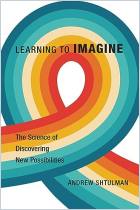加入 getAbstract 阅读摘要

加入 getAbstract 阅读摘要
Kieran Egan
An Imaginative Approach to Teaching
Jossey-Bass, 2005
看看什么内容?
Excite your students’ imagination and engage their capacity to learn.
Recommendation
Kieran Egan presents a fascinating, effective overview of the imagination’s central role in learning. He explains how teachers can harness imagination to help students become excited about education and become more effective learners with improved test scores. Egan explains crucial cognitive tools for teachers, and outlines difficulties educators may face in emotionally connecting to and embracing their own imaginations in the teaching environment. getAbstract recommends Egan’s fresh, convincing methods to teachers on every level, to educational administrators, and to anyone interested in becoming a more efficient, receptive learner.
Summary
About the Author
Educational philosopher Kieran Egan is director of the Imaginative Education Research Group, which champions the imaginative-education concept.



















Comment on this summary